Composing a commercially viable product to close the gap between traditional orchestral institutions and the contemporary audience

IRC projects emerge and progress along a variety of pathways. Some are generated in-house by the IRC staff. Others grow from collaborations with faculty, who come to us with ideas and funding or participate in our Research Fellowship (formerly Summer Faculty Research Fellowship) Program. Projects have different lifespans as well. A goal of these collaborations is usually to use the IRC as an incubator for projects that will eventually grow beyond the IRC to garner funding and gain a significant global presence. EnCue, which began as Symphony Interactive (SI), is a strong example of such a project
How might a symphony-goer’s experience listening to an orchestra be enhanced by an iPad app that quietly suggests salient materials to support the performance? Symphony Interactive (SI) is an iPad application that uses mobile tablet technology to deliver supplemental information and media in real time to audiences attending live musical events. The prototype of this application went through two phases of development, V2.0 & V2.1, at the IRC before moving forward into business development.
Symphony Interactive was initiated by Linda Dusman, Ph.D., Professor of Music at UMBC. Dusman had the idea for Symphony Interactive in 2010, during a UMBC Orchestra concert, when she found herself whispering details about the music to UMBC President Freeman A. Hrabowski III. At the same time, she realized how the newly emerged smartphone and tablet computers allowed for new kinds of interactions with devices. She found some funding and brought her idea to the IRC. There, around the conference table, she was put together with Eric Smallwood, a UMBC graduate (BA and MFA) who was the IRC’s Technical Director for animation at the time.
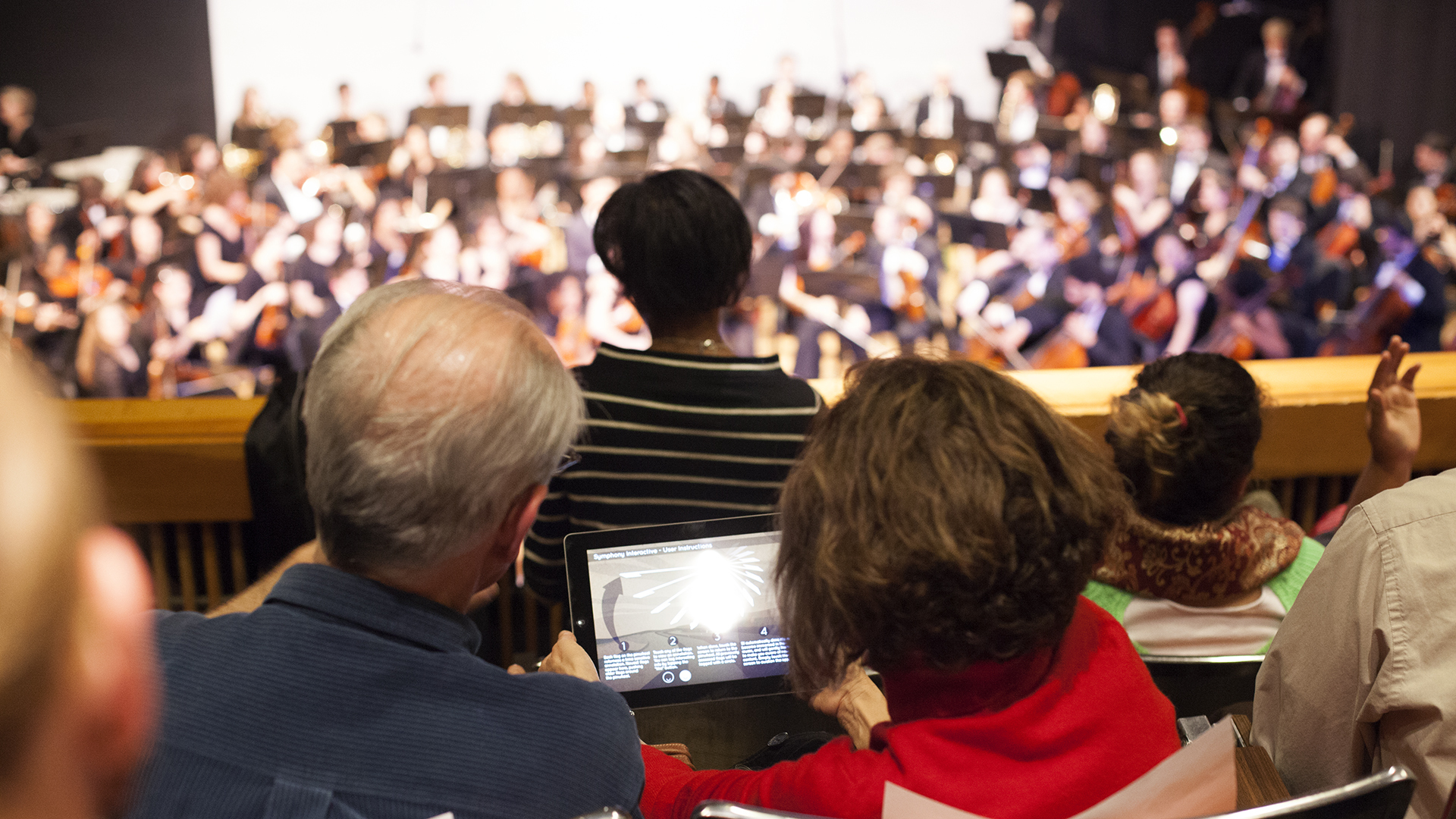
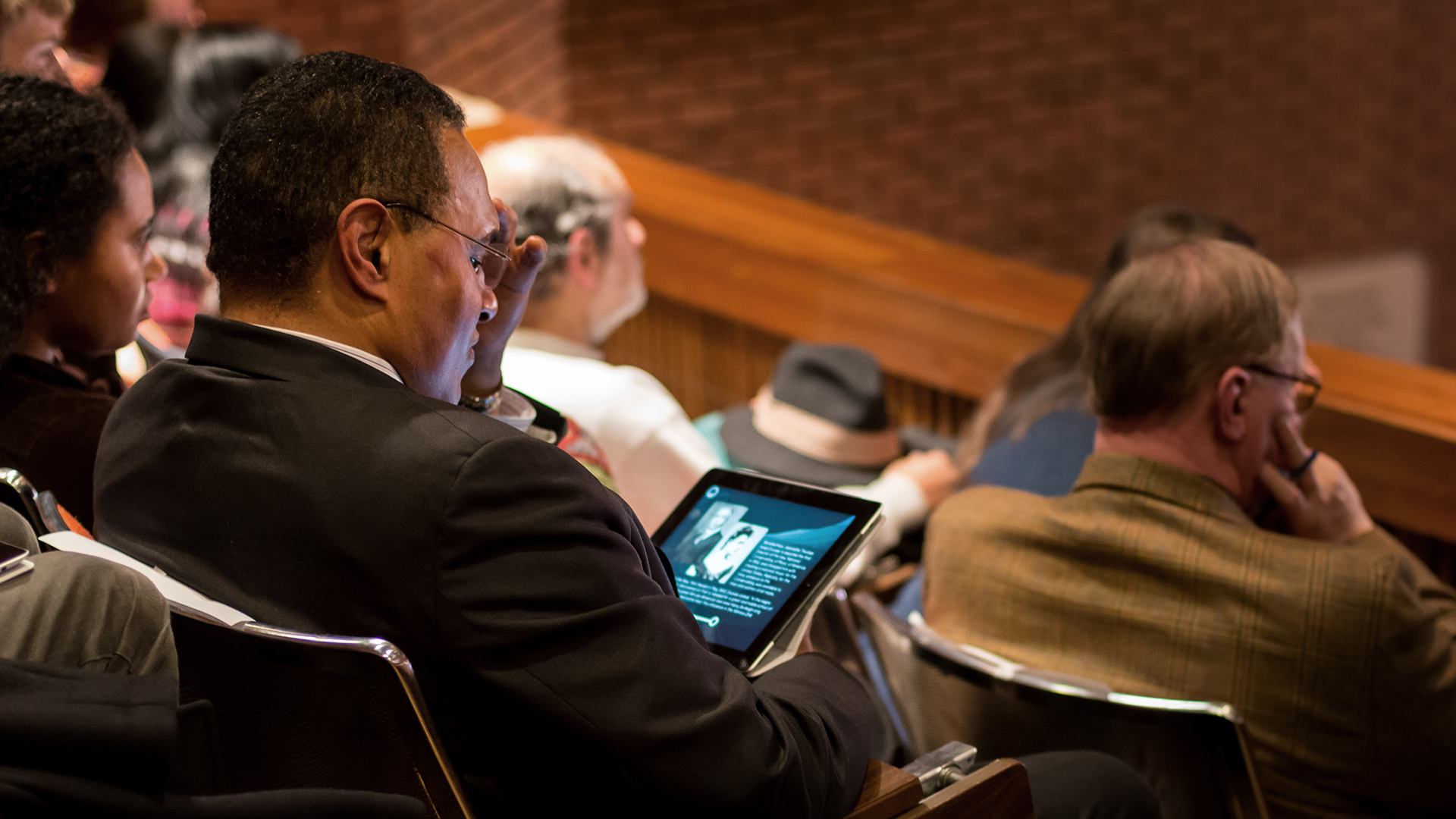
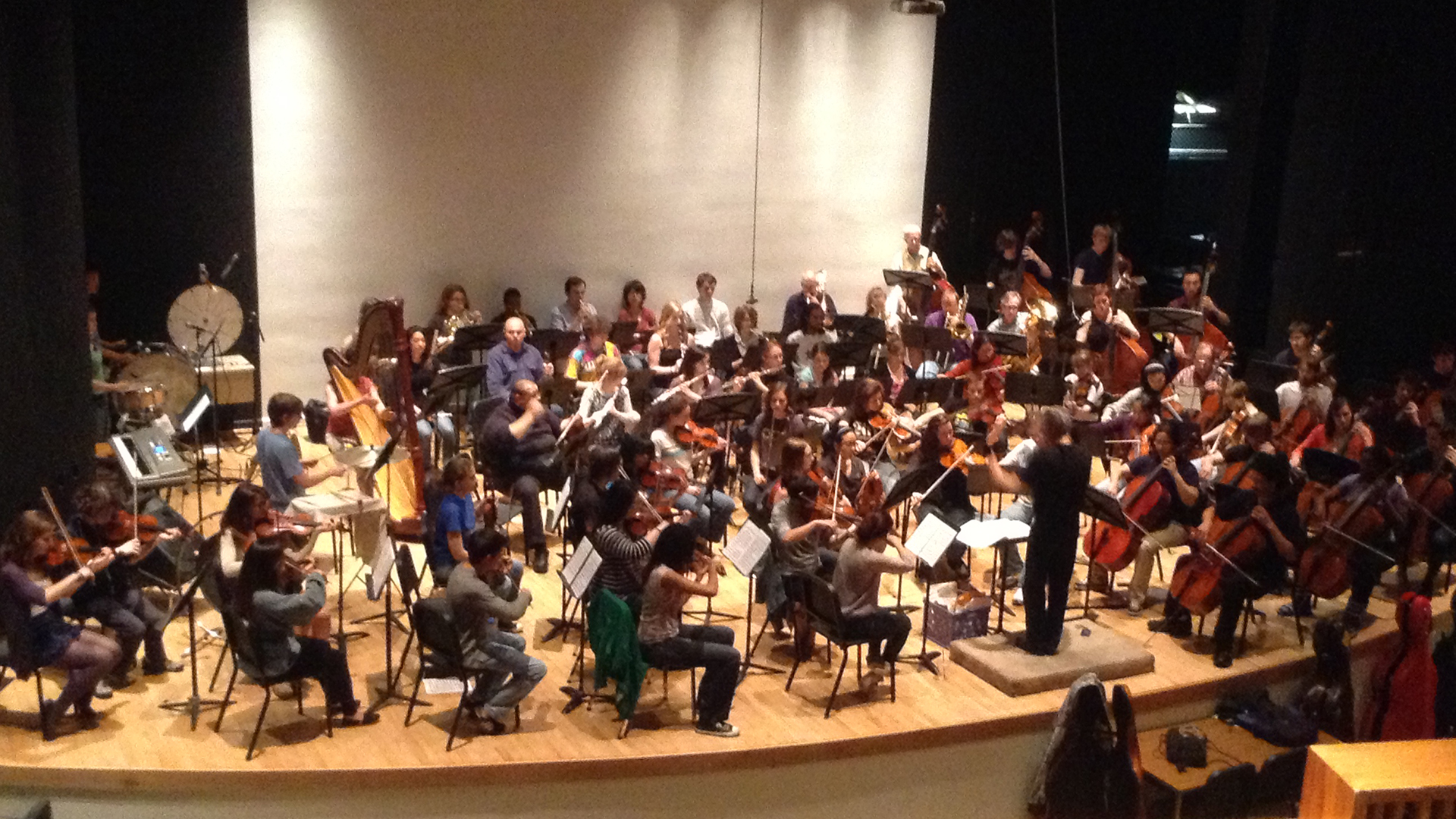
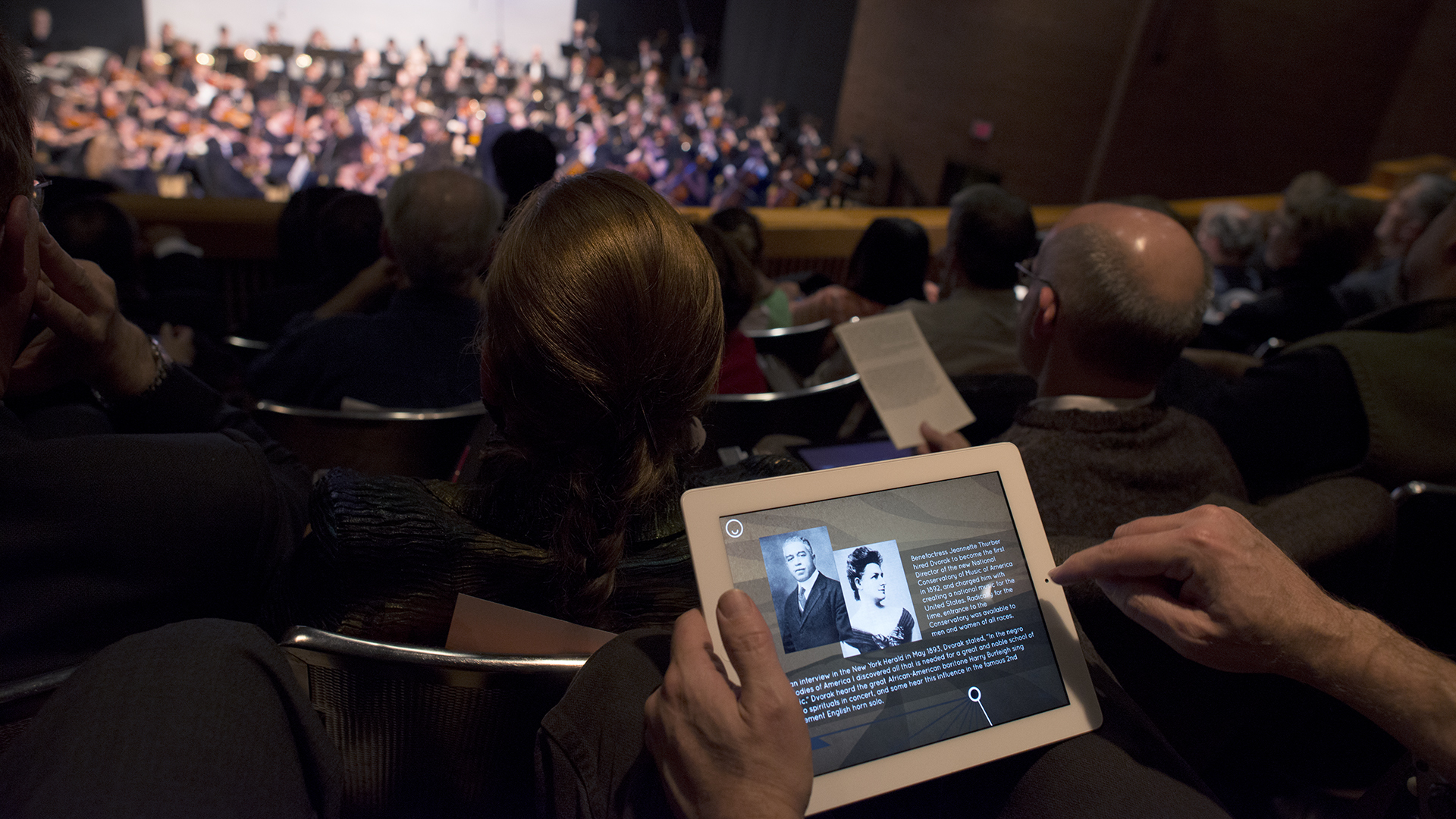
Version 2.0
The SI team began developing this improved version of the application in the fall of 2012. Data from the initial focus group using SI v1.0 revealed that participants found the supplemental information to be useful but thought the interface, especially the virtual score, was too distracting. This second phase of production aimed to develop a less intrusive interface while maintaining easy access to supplemental information, and push the potential for further synthesis between the live performance and the media on the iPad.
For V2.0 Linda Dusman, Ph.D., Professor of Music at UMBC, selected a new score, Erik Satie’s Parade, for its rich history of artistic associations dating back to the original 1917 performance as the score to a ballet by Jean Cocteau, brilliantly painted sets by Pablo Picasso. Assistant Professor of Visual Arts at UMBC and former IRC technical director Eric Smallwood completely redesigned the original visual interface, replacing the original scrolling score with a minimalistic “pinwheel” that combines simplified visual elements inspired by musical notation with clock-like mechanical motion. Undergraduate computer science major Wallace Brown made technical improvements, including the development of a new Java application for improved WiFi network connection stability and the addition of a simple interface for inputting annotations.
In May 2013, a focus group was held for SI v2.0 during the UMBC Orchestra’s performance of Satie’s Parade. Firsthand accounts and qualitative reaction surveys indicate that the more subtle approach to delivering information to users seems to have worked. Users described the app as “engaging,” “fun,” and “easy to use.”
Version 2.1
For version 2.1, Linda Dusman, Ph.D., Professor of Music at UMBC, selected a new score, Antonín Dvorák’s New World Symphony. Symphony Interactive v.2.1 was tested during a live performance by the UMBC Orchestra on November 24th, 2013 in the Fine Arts Recital Hall at UMBC.
EnCue
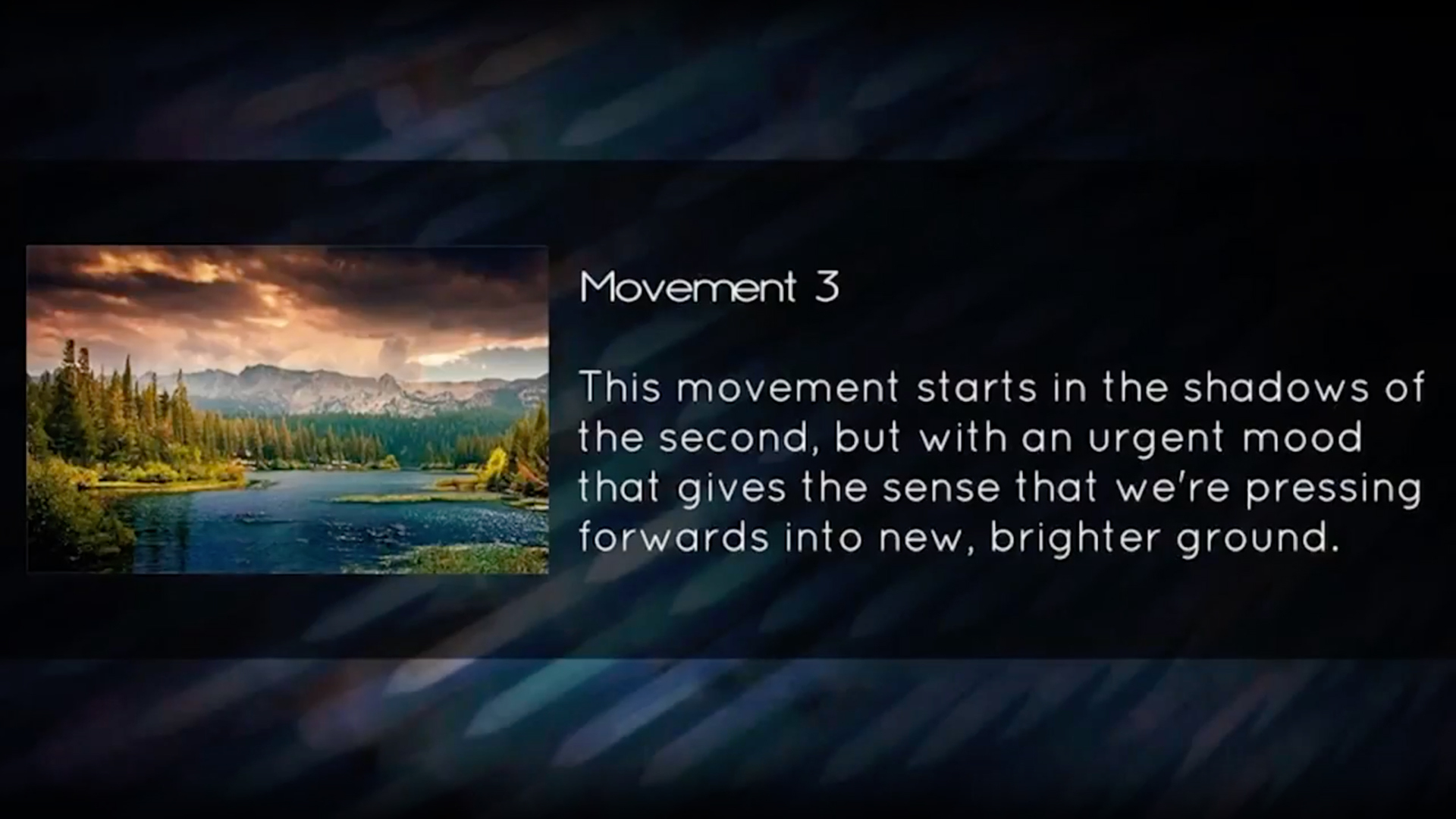
After v2.0 and v2.1, Dusman and Smallwood began working with the Maryland Innovation Initiative, a program of TEDCO, an independent organization created by the Maryland Legislature “to assist in the creation and growth of technology-based businesses” in partnership with select research universities in the State. They received mentoring as they wrote a business plan and grappled with patent and intellectual property issues. After three tries, they received funding and were able to hire a professional computer programmer. By this point, Smallwood was working as a faculty member in Visual Arts, and the IRC was no longer involved. This is what should happen as a project progresses from the research phase to commercial development.

EnCue by Octava (the company that Dusman founded with her collaborator, Eric Smallwood) is now being used regularly by the London Symphony Orchestra, the National Orchestral Institute, and the Royal Philharmonic Orchestra. Orchestras can draw on EnCue’s library of content (about thirty pieces), contract with the EnCue team for custom content, or write their own.
Researchers and Creators
Project Leads: Dr. Linda Dusman, Eric Smallwood
Computer Programmer: Wallace Brown
Programming Consultant: Mark Jarzynski
Imaging Research Center, UMBC © 2024